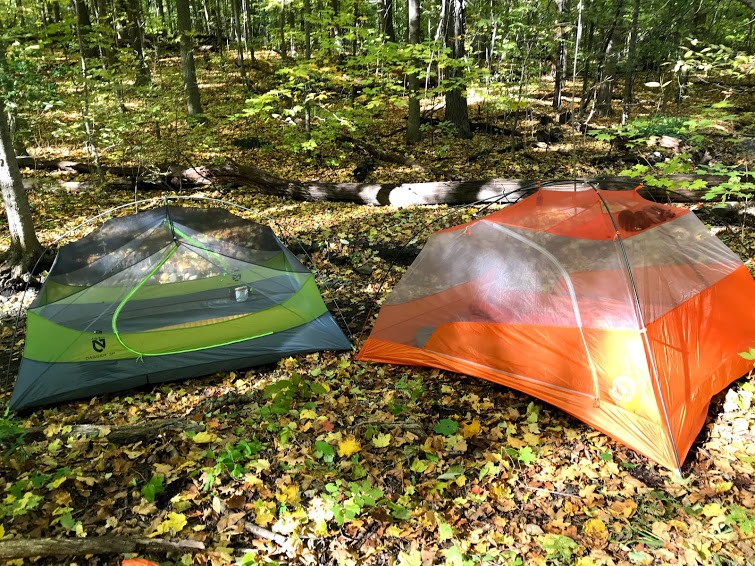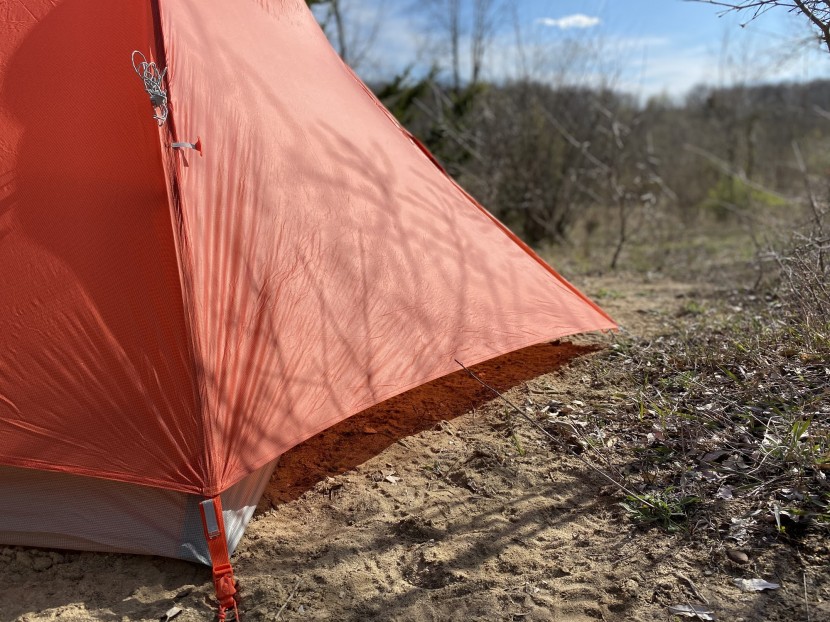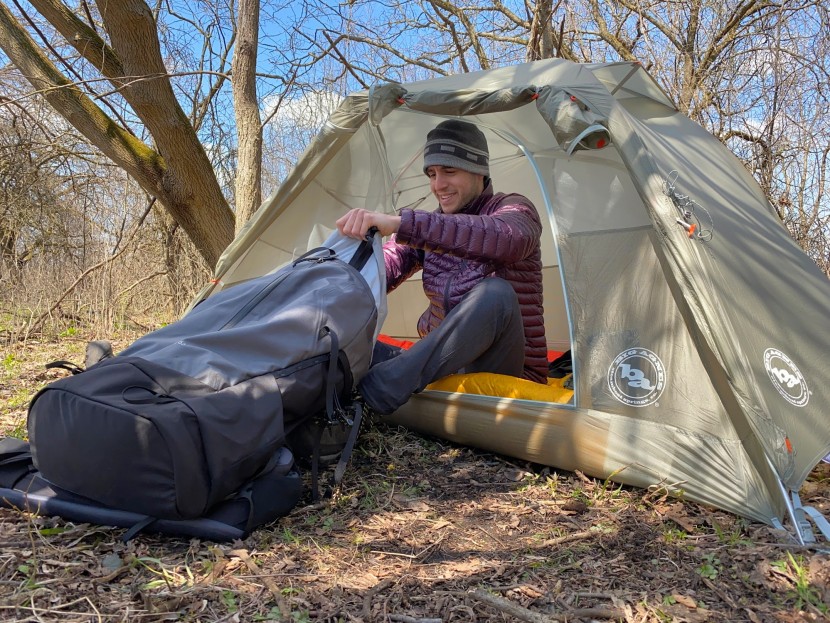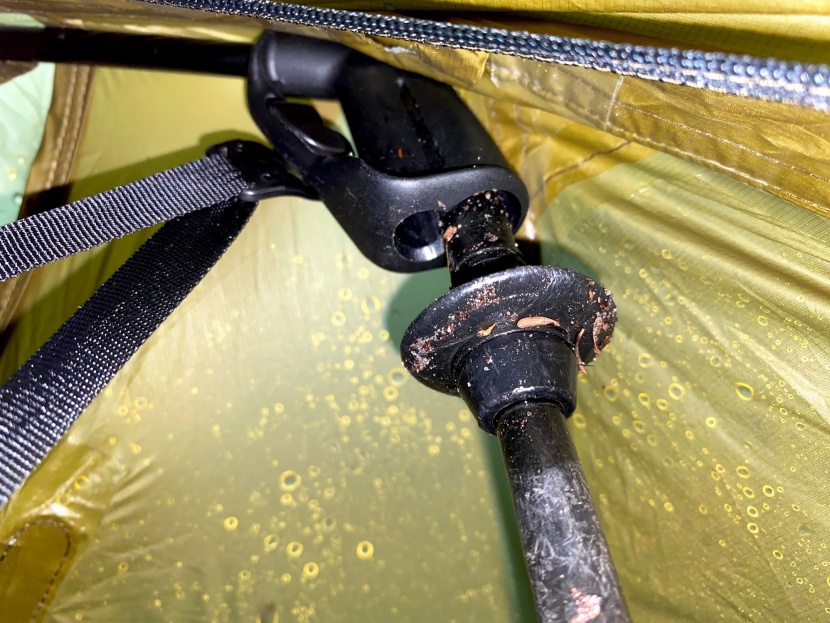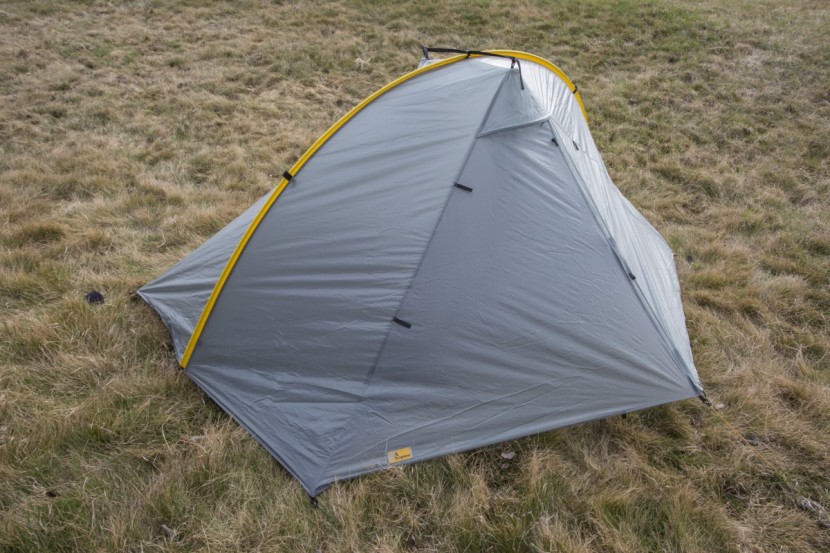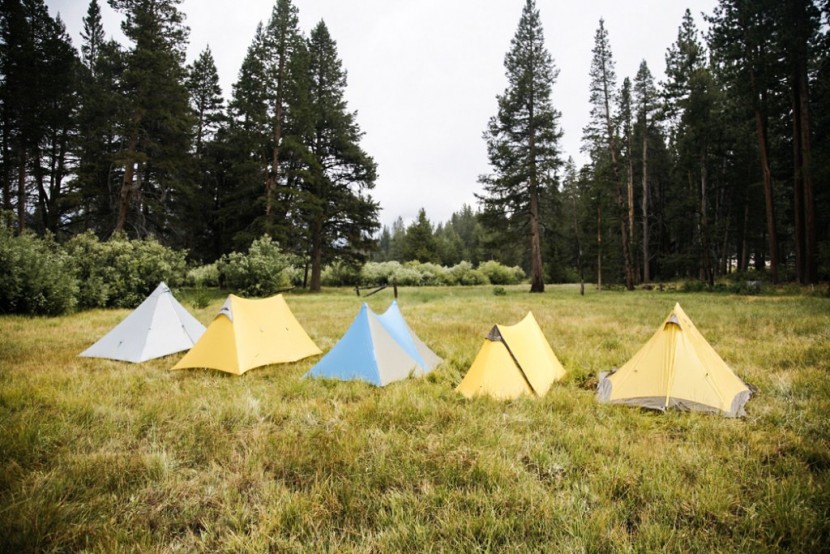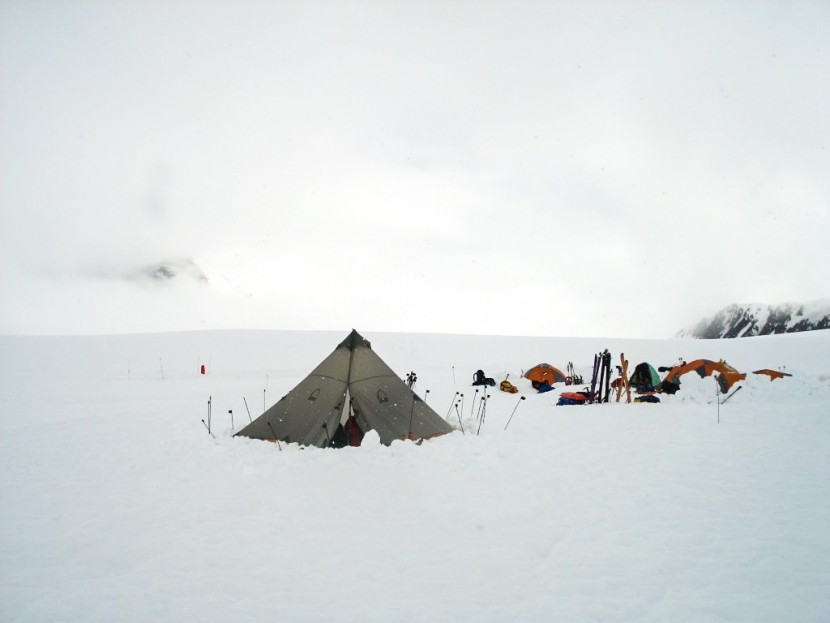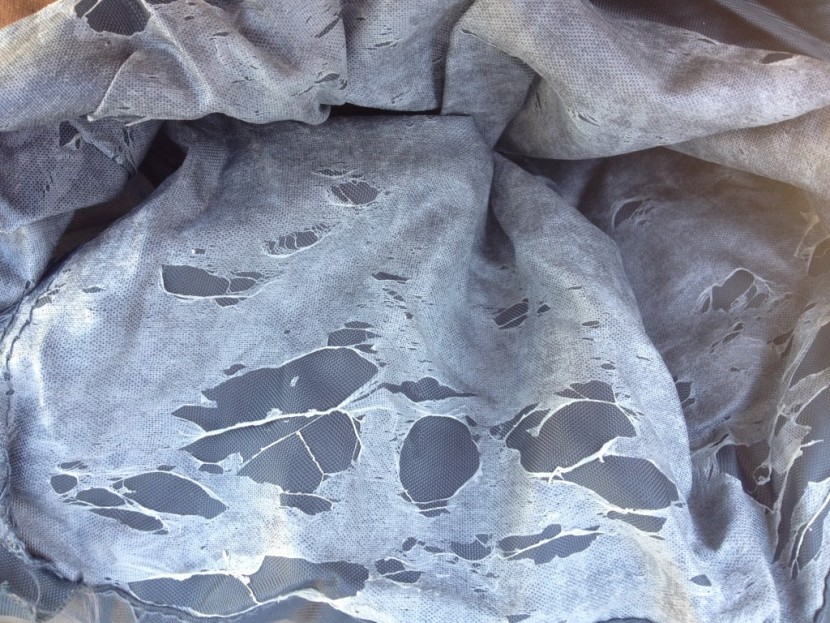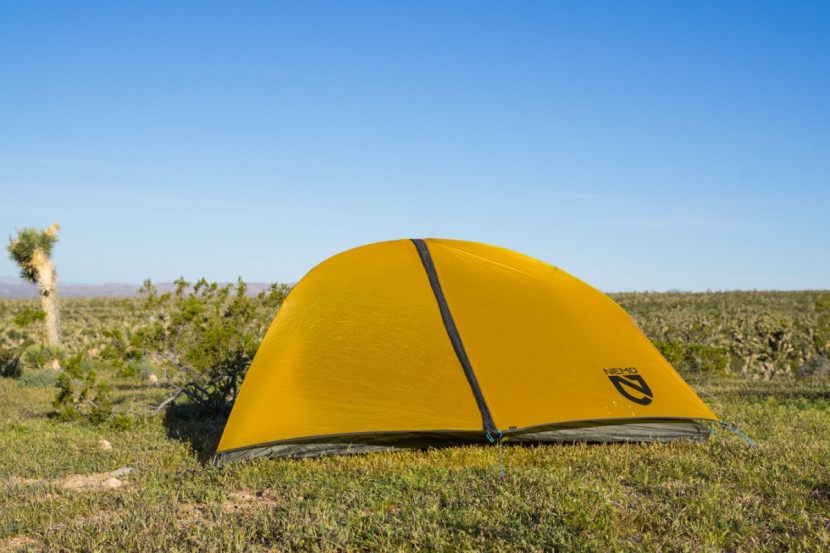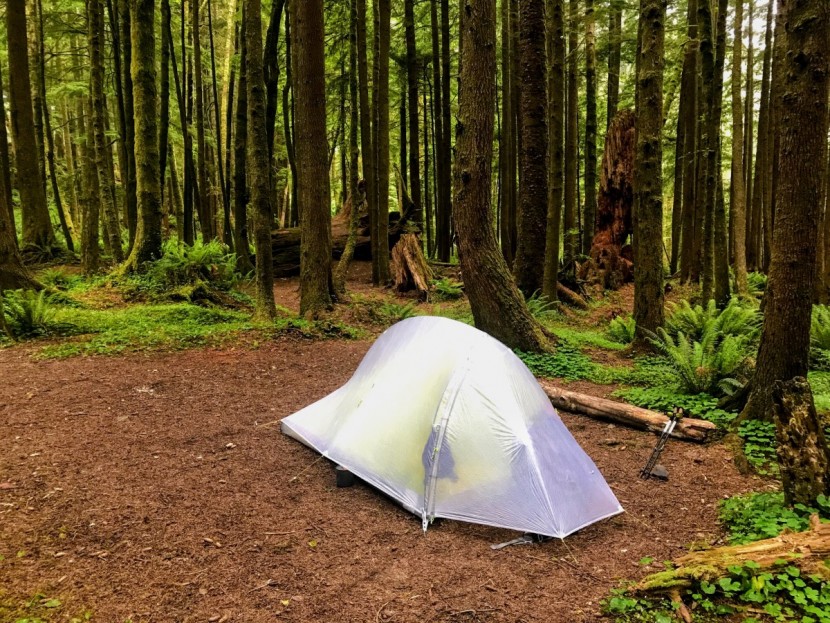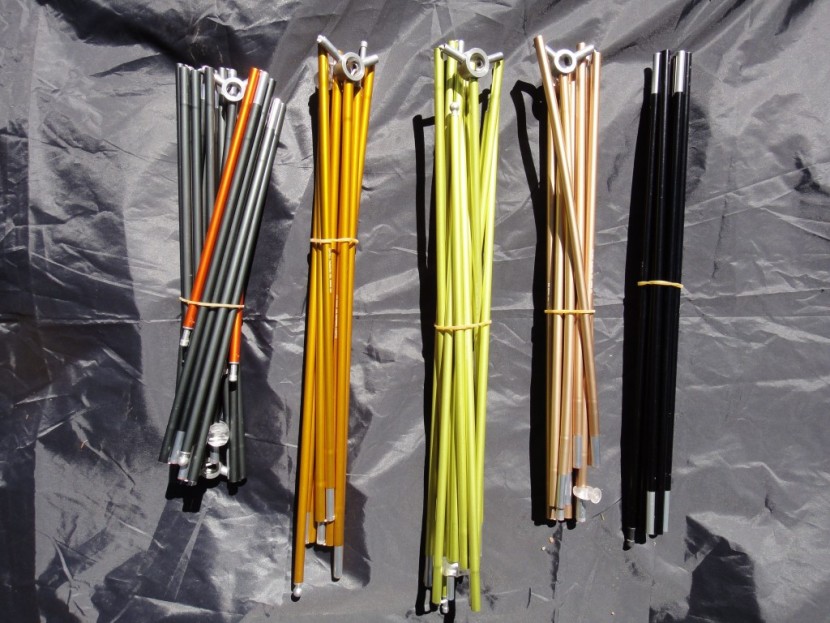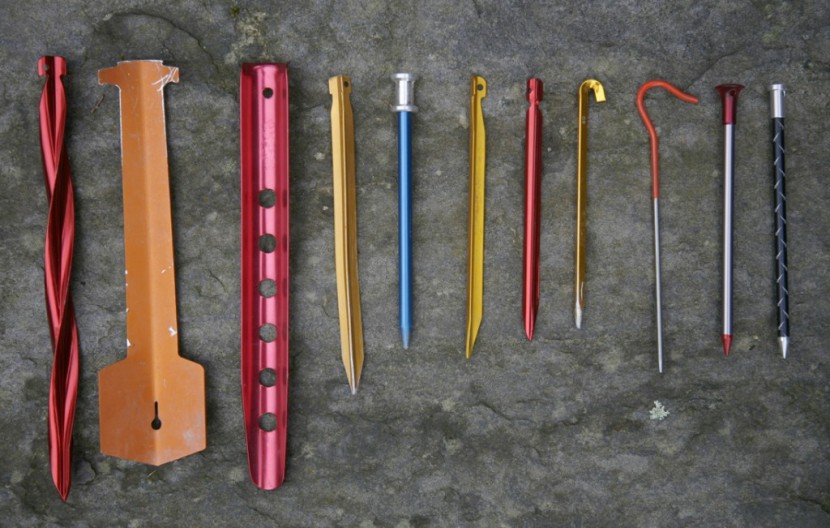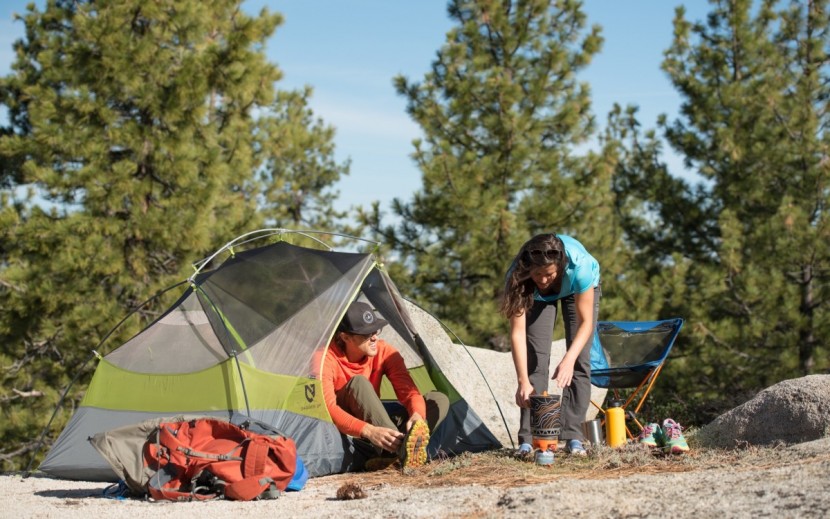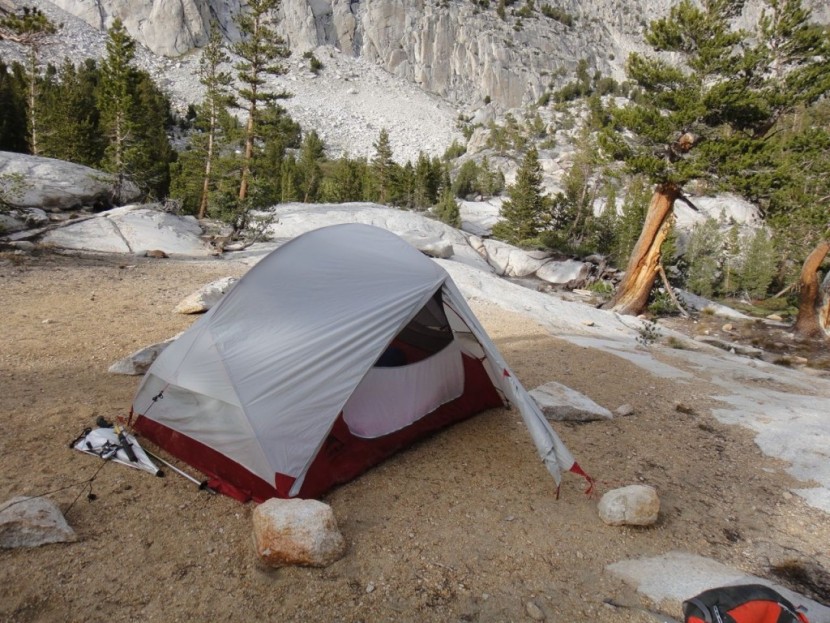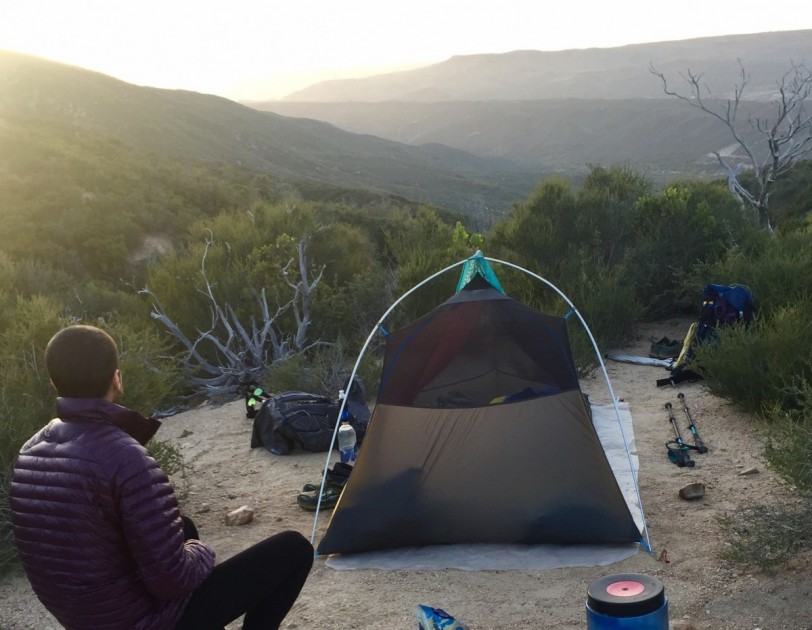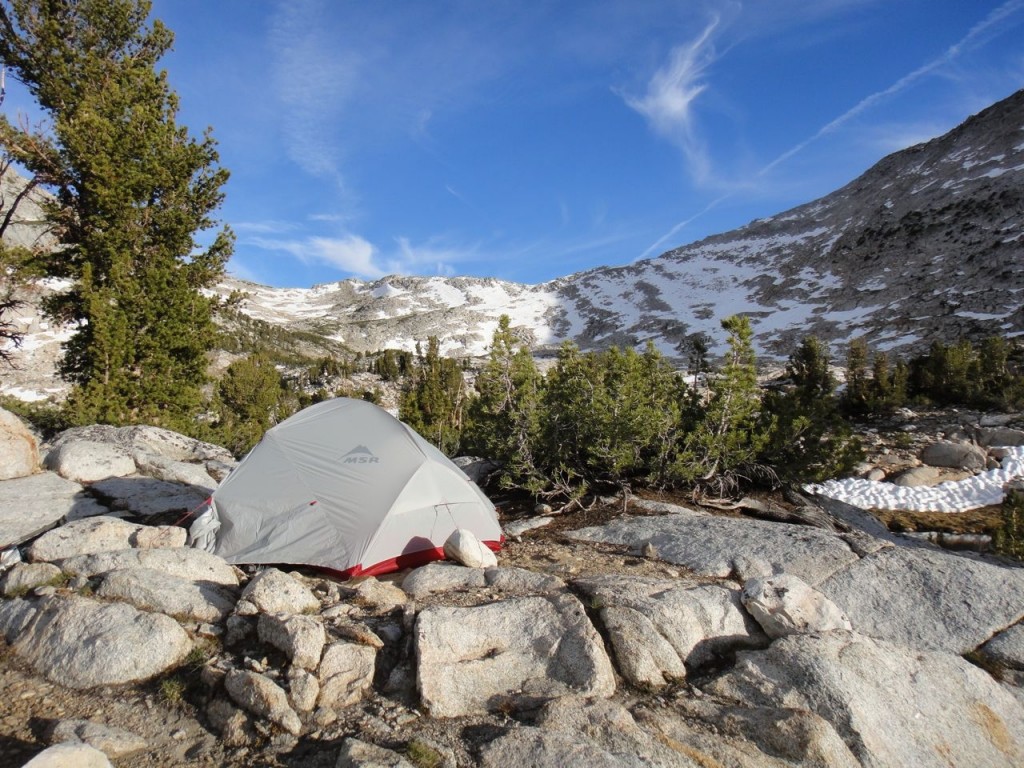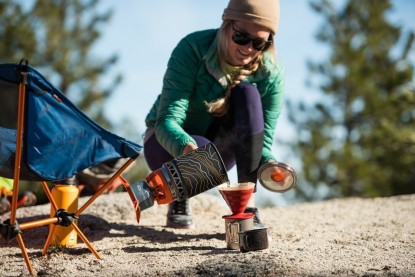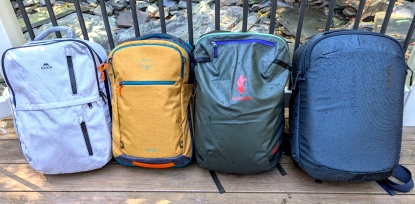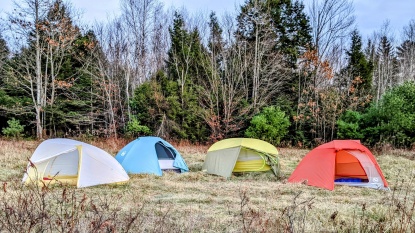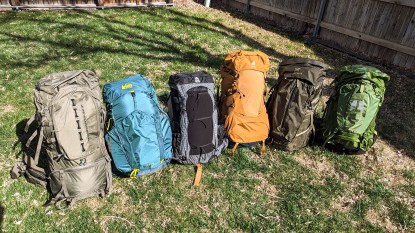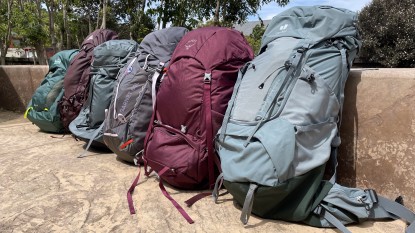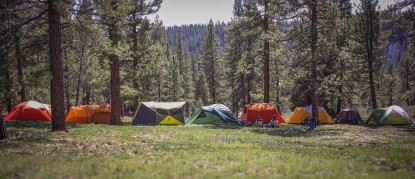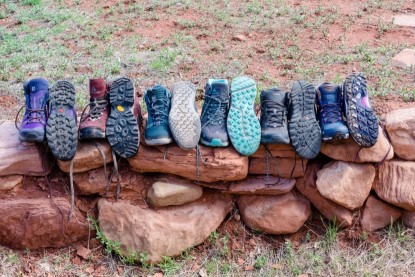Your tent can make all the difference on a backpacking adventure. But selecting the best model for you depends on a few factors: trip frequency, duration and location, what the weather is likely to be, the distance you are you planning on carrying your tent, whether you want to be by yourself or with other people (or pets), which additional features are most important to you and, of course, how much you want to spend.
Types of Shelters
Double-Wall Tents
Double-wall tents have three primary parts: (1) an inner tent with a waterproof floor and non-waterproof canopy (almost always mesh), (2) poles, and (3) a waterproof rainfly. Most double-wall tents are quite easy to pitch, offer complete protection from rain and bugs, and are comfortable. However, they also tend to be the heaviest type of shelter, owing to a dedicated set of poles and multiple layers of fabric. Double-wall tents come in a couple of basic sub-varieties:
Freestanding tents
When you close your eyes and think “tent”, it is probably a double wall freestanding model. This variety stands up entirely on its own (with ground stakes to hold it in place). It is most often used for car camping, overnights, or any backpacking trip where weight is less of a concern. More durable models can be used for harsh weather and winter camping, as well.
Semi-freestanding tents
These tents have their own set of poles but also require a few stakes or guy points to pitch at full volume. This style is increasingly popular because it offers the security and comfort of a double-wall tent while reducing weight by removing some of the pole structure. There are even several models that can be pitched with a pair of trekking poles instead of the included poles, which reduces carried weight even more.
Tunnel tents
Tunnel tents are a type of semi-freestanding tent that has a unique pole structure. They have one or more hoop-shaped poles and rely on guylines to stand upright. Tunnel tents generally have a higher space-to-weight ratio than other styles (for the geometry people out there, think of the volume of a cylinder versus a triangular or rectangular prism inscribed in that cylinder).
Thoughts on doors: Within the world of double-wall tents, there are many variations on door size, shape, and zipper configurations. They can be broadly broken down into three types: (1) double side door (2) single side door, and (3) front-end door. We find that double side door tents — those with an entrance on each side — are the most comfortable and most versatile. When camping with more than one person, each person having their own entrance and corresponding vestibule is a huge plus. It also means that if you are setting up on a small or irregular tent site, there is more flexibility with the orientation of the tent. If a boulder or tree is blocking one door, there is a second one on the other side. Front-end door models — those with just one door positioned at the head of the tent — also offer equal access to both people in a two-person tent but it's harder to exit without disturbing the other person. Single side door tents — those with just one door on one person's side — work well for individuals but are the least comfortable if there are two or more people; the person on the far side must climb over the person closest to the door to get in and out of the tent.
Going Big: The Value of a Three-Person Tent
Many tent models come in some combination of one, two, three, or four-person versions. Two-person tents are by far the most popular. Usually, the difference between a two and a three-person version is the width. Manufacturers will add around 20 inches (the width of a standard sleeping pad) and voila, your tent is now fit for three! Occasionally, the extra floor space comes with a little more headroom and maybe some more length, but this is not always true.
If it is possible that you will bring a couple of friends or your dog on your trip, then it makes sense to look at the three-person version of whatever model you are scoping out. You could certainly opt for a more spacious 2P, and you would almost certainly pay less for it. But consider this: if the tent you have your eye on is a lightweight 2P, it is almost certainly going to also be lightweight in its 3P format. In other words, the 3P version of a lightweight tent may still be lighter than a lot of 2-person tents, so if space is equally important to you as weight, consider sizing up.
Tarp Tents
Tarp tents are single-walled shelters with a built-in floor and bug netting. What's a single-wall shelter? It's similar to a double-wall shelter except instead of a mesh canopy overhead with a separate fly attached over the top of that, the rainfly is the ceiling (and is permanently affixed). The benefits of these models are that they have fewer parts and tend to be much lighter than double-wall tents.
They also offer complete protection from the elements. Their biggest drawbacks are that they are susceptible to interior condensation, meaning you might wake up damp in the morning (remember, all that breathable mesh just got replaced with a solid piece of fabric). They are also the least adaptable because all of the parts are attached. Tarp tents pitch with dedicated poles, trekking poles, or a combination of the two.
Ultralight Shelters
Here we call any shelter that does not come with dedicated, flexible poles an ultralight (UL) shelter. There are a couple of different types of UL shelters.
A-Frame Tarp
The tarp is the lightest variety. The defining feature of an A-frame is its shape. There are also flat tarps (a flat, waterproof material with guy cords attached to trees or other supports), and even poncho tarps (you wear it as rain gear while you are hiking and sleep in it as a shelter at night). A-frames resist sagging and stay fairly taut with smooth and stiff walls that block the wind well.
This variety also has two open ends, so it's essential to find solid, protected campsites in high winds and driving rain. If unprotected, the shelter is unsuitable for use in very exposed, high-wind conditions. On the other hand, its simplicity also enables the tarp to be pitched in many different ways: high up off the ground, over a picnic table, to cover a lean-to opening, or you can use it as a ground cloth when the weather is nice and just sleep on top of it. A-frames can be pitched with cord strung between trees, trekking poles, paddles, or dedicated aluminum or carbon fiber sectional poles (typically sold separately).
Pyramid Tarp
Pyramids, or “mids,” are strong and weather-resistant. This style pitches with one or two poles (trekking poles, paddles, or dedicated sectional poles), is enclosed on all sides, has steep walls that shed wind and snow, and offers good weather protection.
Mids are limited to one pitching configuration. They are also heavier and prone to condensation, but they offer greater weather protection and added privacy over an A-frame style. Mountaineers often use mids for group cook tents. Some mids are available with model-specific modular components, which can make them more versatile.
Materials
Fabrics
Backpacking tent floors and flies are made from coated polyester, nylon, or cuben fiber. A fabric's denier (D) is a unit that refers to the thickness of fabric fibers. For reference, a human hair is around 2-4D. The lightest tent fabrics are around 7D, most tent floors are made of 40-70D, and expedition duffel bags are made of 1,000D fibers.
Polyurethane (PU) coated fabrics
PU is the coating of choice for almost all less expensive tents — it's just a cost-effective way to create a waterproof fabric with reasonable durability in cold and wet conditions. Unfortunately, PU coating is susceptible to hydrolysis (chemical breakdown), which eventually renders it less effective. The wetter and warmer the conditions, the faster hydrolysis happens. With enough sun exposure or poor storage, the PU will visibly separate from the fabric and flake off.
SilNylon
Silicone elastomer coated nylons are generally used on more expensive backpacking and mountaineering tents. SilNylon is highly water repellent, elastic, and UV and temperature stable. SilNylon is considerably stronger, lighter, and more durable than PU-coated fabrics. It's also much more slippery than PU, which makes it ideal for winter applications because snow slides off easily. Unfortunately, for the budget-conscious consumer, silicone is more expensive than PU.
Cuben Fiber
Cuben fiber (often marketed as Dyneema), is an incredibly light, strong, and durable waterproof material. It has a variety of applications in the outdoor industry and beyond. Dyneema threads (50-70% lighter and 400% stronger than Kevlar and 1,500% percent stronger than steel per unit weight) are sandwiched between tough UV-resistant Mylar. Unlike SilNylon, cuben fiber doesn't stretch, which means that you don't need to retighten a tent's guylines as frequently. Cuben fiber can be repaired quickly with adhesive tape, and doesn't absorb water, which means your tent won't get heavier if you have to pack it up in a rainstorm. It also weighs about half as much as SilNylon. It's most commonly available from cottage industry companies. However, major manufacturers are beginning to incorporate it into their products.
So why isn't everything made of cuben fiber?: the mind-numbing price. Tents made with this material are wildly expensive (think over $1000 for a 2P). Since cuben fiber doesn't stretch, it is more prone to puncture than SilNylon, but if it does puncture, it's strong enough that it is less likely to tear more.
Poles
Many major tent manufacturers partner with DAC, a Korean aluminum firm, for help with tentpole designs and/or to supply the poles for a specific model. Most of the poles included with the tents we tested are good quality. Some are lighter and stiffer than others, but none of them are objectively bad. Most of the models tested here use aluminum from either Easton or DAC. We believe that a tent's pole design and the fabrics used in the tent are more important to the overall integrity of the tent than the type of pole material.
Stakes and Guylines
For three-season freestanding, double-wall tents, stakes and guylines are important, but not critical. For any other type of shelter, it pays to have high-quality versions of these often overlooked components. Unfortunately, we find that shelters often do not come with an adequate amount of guyline. Quality stakes are relatively easy to come by (though the best ones are not what you are going to get out of the bag). To achieve a proper pitch, you'll probably need to get more guyline and/or stakes. Most tarp shelters don't include stakes, and only a few models we tested come with quality guyline, so investing in a complete set of high-quality stakes is worth it.
The Follies of Fast-Pitching With a Footprint
Although manufacturers tout their tents' fast-pitch weight (a setup that includes a footprint, poles, and fly, without the tent itself), it's definitely not a quality that we think campers have to have. It's not necessarily easier or less work to pitch than the entire tent and offers less protection from bugs and weather. The configuration also isn't as light a floorless shelter. It does reduce pack weight, since you don't have to carry the tent itself, and it conceivably provides more interior space than if the tent body was pitched, but we largely think that the fast-pitch configuration is more gimmicky than practical.
Comparing Tents and Ultralight Shelters
Comfort
How much comfort we need and want varies highly based on our experience camping, how much time we plan to spend in our shelter, and what we believe to be an acceptable level of protection from the elements. If a “true wilderness experience” is a primary objective, ultralight shelters offer a much greater connection to nature. When used with the right combination of accessories (bivy, insert, head net, etc.), shelters offer lots of comfort, although these accessories add complication and weight. If you are just starting out and want something that feels homier and is easier to pitch, a double-wall tent is a good starting point.
Weather Resistance
Double-wall tents provide excellent protection from all the elements, but they don't tend to be as strong or as durable as ultralight shelters that come with fewer parts to break.
Durability
What we require from a tent varies with location and weather conditions. One night we might need protection from vertically falling rain. Another night it could be wind. And another night, the skies may be clear with no wind; all we need is bug protection. Tents that can adapt to varying conditions, or be used in locations that don't allow for a perfect pitch can save time, money, and energy. Most double-wall tents are not adaptable. They must pitch in the same configuration every time. Shelters offer much greater adaptability.
Ease of Set-Up
Typically double-wall tents are much easier to set up than ultralight shelters, which are not free-standing and require guy line systems, trekking poles, and proper tensioning.
Weight and Packed Size
Conventional wisdom is that ultralight shelters are much lighter and more compact than tents. While this is largely true, the gap has been narrowing over the years slowly but surely as materials continue to get lighter and lighter. There are multiple two-person tents on the market that weigh in below two pounds (though admittedly, they do not offer nearly as much usable space as their tarp siblings).
Tent Use and Care Tips
Pitching
It takes extra time, for sure, but if you want a perfect pitch, you should aim to guy out all lines. Add extra cord if needed and make mid-level guylines at least six feet long. It can be useful to add extra cord to the vestibule and ground-level guy loops. Add big rocks or logs on top of stakes, or substitute rocks, logs or vegetation for stakes.
Site Selection
Be sure to follow Leave No Trace Principlesin the backcountry. When choosing a site to camp, plan ahead.
Look for sites that are:- Off-trail: this shows respect for other users by giving people space, it also reduces the impact on sites right beside the trail
- Flat: These areas on the map may already have established campsites, especially if they are near water
- Somewhere breezy (if it's buggy)
- Not in the bottom of a valley, where the air will be colder and dew and frost greater
- Not near animal paths or prime habitat
- Away from hazards like flooding, rockfalls, and avalanches
- Away from water - don't contaminate everyone's water source!
Consider other ways topography will influence environmental conditions. Will a long valley become a wind tunnel? Where will precipitation flow to and accumulate?
On a micro level, choose a site that is:
- On dry ground, because when your shelter is wet
- On durable surfaces such as granite slabs, duff, or gravel
- At least 200 feet from water
- Near or under an object, like a rock, tree or bushes, that will act as a windbreak
- Slightly convex, so that water drains away from your tent rather than pooling underneath it
Storage
Fabric coatings break down faster if tents are stored wet. Dry a tent completely before storing it (mold and mildew are also big factors here) and fold and roll it up with the poles inside every time. The haphazard stuff method is fine for the trail, but neatly rolling the tent for long-term storage will increase its longevity.
Other Considerations for a Backpacking Tent
Forget the Footprint
Custom footprints — waterproof, durable fabrics cut to match a tent bottom — are accessories that are often unnecessary and overpriced. Exceptions are if you have a tent that can pitch in 'fast fly mode' and you plan to use that feature regularly, or if you know that your go-to campsites have coarse gravel or rocks.
If you don't care for fast fly mode, and don't need the custom footprint that matches your tent, consider cutting your own out of Tyvek Home Wrap or polycryo plastic. The weight of a sleeping pad and bag keeps a custom footprint in place — there's no need for grommets. Tyvek is a highly durable and puncture-resistant plastic sheet. A typical tent-sized piece weighs around seven ounces. It's not particularly lightweight, but if you're looking for a single, inexpensive footprint that will do the trick for both car camping and backpacking trips, this is our top pick. You can buy Tyvek siding wrap at hardware stores or online. Polycryo is a lighter and less durable option that ultralight backpackers favor.
Color Matters
A brightly colored tent is ideal for expedition mountaineering and alpine climbing because it allows you to locate it more easily. An attention-grabbing color can help others find you if you need to get picked up or rescued. For three-season applications, a brightly colored tent tends to be a disadvantage when you want to camp stealthily or adhere more stringently to Leave No Trace principles. Dark green, beige, or moderate gray colors blend in well in most snow-free forest environments and draw less attention from wildlife and people. However, if you are going camping in an area where hunting is also allowed, you may want to stick with high visibility.
Conclusion
The universe of tents and tarps is ever-expanding, but choosing the right shelter for you should be anything but impossible. If we could give one piece of advice on narrowing down your options, we would say start with what you need, rather than what the tent market is trying to sell you. Whether it's a model for one person or four, ultralight or traditional, the right tent for you is out there. Happy trails!

